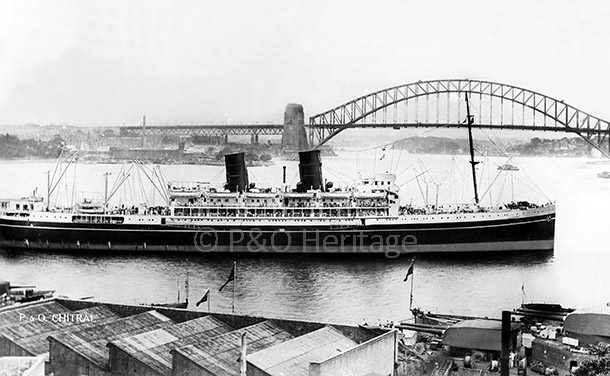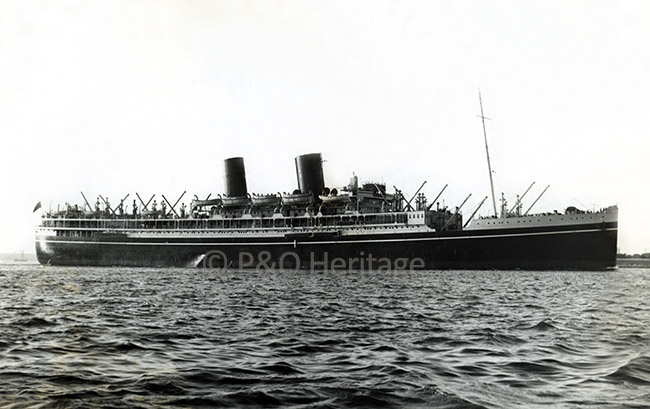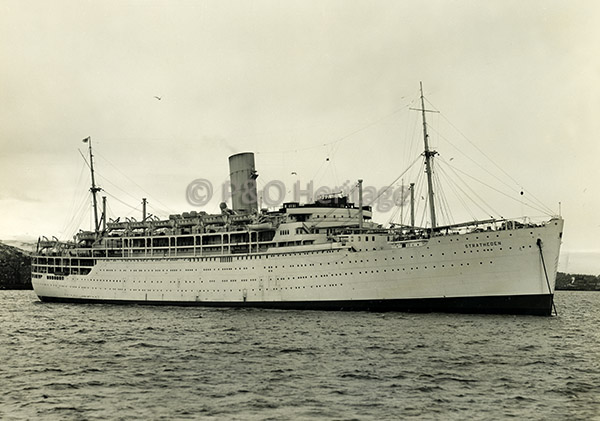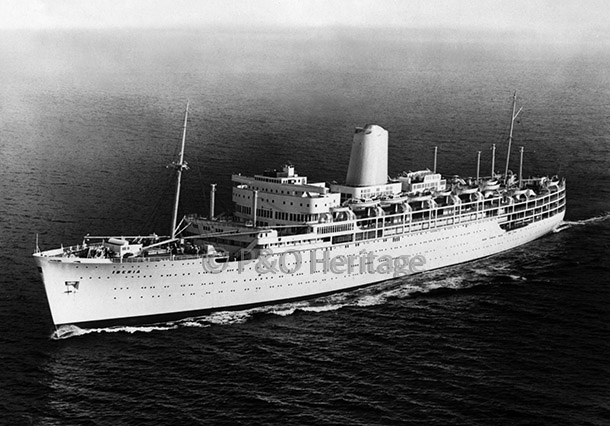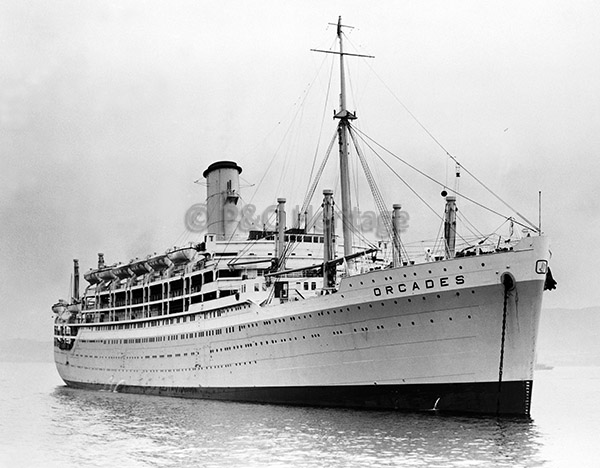With the prospect of tens of thousands of emigrants flocking to Australia , the assisted passage scheme was also looked on favourably by the shipping companies. Lines such as P&O and Orient Line took advantage of contracts to charter ships to the Australian Government which brought in a regular and steady income.
The war had taken its toll and both P&O and Orient Line had lost a number of passenger liners to enemy action. Many more were still required on trooping duties. A new wave in emigrant traffic provided a new lease of life for four of P&O’s oldest liners MOOLTAN, MALOJA, CHITRAL and RANCHI, which were reconditioned ‘on austerity lines’ and were almost exclusively chartered by the Australian Government between 1948 and 1953. The remaining ‘Straths’ STRATHAIRD, STRATHEDEN, STRATHMORE, STRATHNAVER, designed for the Australia run in the 1930s, were also used to carry emigrants outward bound. The Orient Line (in which P&O had a majority holding from 1919) had lost four passenger liners in the war leaving only ORMONDE, OTRANTO, ORONTES and ORION to assist in the passage of migrants to Australia.
As the demand for the assisted passage scheme grew, and commercial shipbuilding resumed after the war, investment in new, faster and more economic ships increased the capacity and speed of the passage to Australia. P&O launched HIMALAYA in 1949 reducing the journey time from England from six to four weeks. ARCADIA and IBERIA followed in 1954 and three new ships were built for the Orient Line, ORCADES, ORONSAY and ORSOVA.
A number of other lines, including Union-Castle Line, Aberdeen & Commonwealth and Sitmar (subsequently acquired by P&O in 1988), also benefited from Australia’s immigration policy, at a crucial time when traditional line voyage passengers were starting to decline. But for P&O and Orient Line, the 'ten pound Poms' were more than passengers for the present, they were about to help shape the design of two new superliners for the future…
